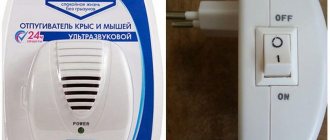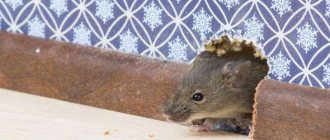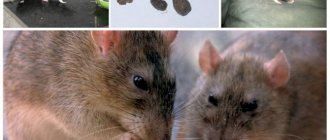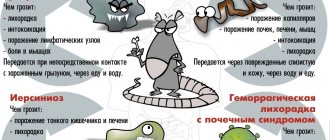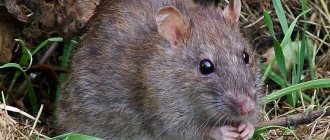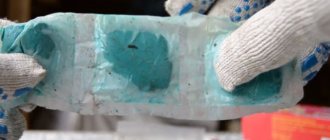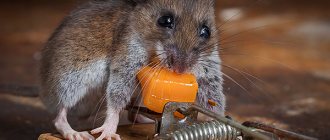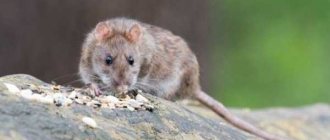Many people are afraid of bats from an early age. And when will this seemingly vicious animal begin to live on the roof of a house or in an apartment? Constant rustling, squeaking and the possibility of suddenly flying into an apartment can create a feeling of fear even in those who have strong nerves.
If there is a concern about mammals, people often ask how they can get bats out from under their roof. There are a large number of methods for breeding bats that help solve the problem.
Preventive measures
Signs of bats
Bats live in warm places inhabited by humans - in the attic, balcony, barn, summer cottage, and can also fly into living quarters. They are very agile and can squeeze into gaps of 1-1.5 cm.
There are a large number of methods for breeding bats that help solve the problem.
The main reason for the appearance of animals in a house or country house is the search for shelter for reproduction, so most often it is not individual individuals that appear, but entire colonies. In the spring, their number increases significantly, and by August the grown offspring begin to fly, then the problem becomes obvious.
Constant rustling, squeaking and the possibility of suddenly flying into an apartment can create a feeling of fear even in those who have strong nerves.
The appearance of bats can be determined long before this moment by the following signs:
- The appearance of extraneous noise and squeaking at night.
- When inspecting the premises, traces of fur can be identified.
- The appearance of a sharp unpleasant odor.
- In settlement areas there will certainly be round-shaped animal excrement, called guano, and urine stains.
Based on its habitat and nutritional characteristics, the animal is not classified as a pest.
A subtle sign of the appearance of bats is a decrease in the number of mosquitoes and midges and beetles on which they feed, which bring undoubted benefits. Some species of animals eat fruit, so they can significantly spoil the harvest. But the most important danger is the likelihood of infection due to the bite of these creatures, since they are carriers of dangerous diseases. Therefore, it is better to get rid of such a neighborhood in a timely manner.
Very rarely does a bat come into contact with people, since it lives in dark, inaccessible areas.
Features of bats
Bats belong to the order Chiroptera. But they are not “relatives” of ordinary mice. They are considered primates. These animals are nocturnal, despite their rather poor eyesight, and are perfectly oriented in the dark. Bats emit ultrasound, which helps to accurately distinguish small stones from insects over long distances. It is thanks to echolocation that they move in the dark. Below are some more interesting facts about bats.
- Life cycle. Bats live longer than dogs. On average, the lifespan of a “mystical” animal is 25-30 years.
- Dimensions. Bats, depending on the species, may have different parameters. Some individuals do not exceed the dimensions of a bumblebee in size. But there are also real giants, whose wingspan is 2 m.
- Ancient inhabitants. According to archaeological excavations, bats inhabited our planet approximately 55 million years ago. These animals have been practically untouched by evolution. Their remains are no different from modern individuals.
- Body temperature. Can vary from −7ºС to +48ºС.
- State of numbness. In winter, bats, deprived of the opportunity to get their own food, prefer to do nothing. Goes into a sleep state. This numbness can last up to eight months. The animal independently slows down metabolic processes and lowers body temperature. In the event of severe frosts, they can turn into real “icicles”, but with the arrival of warmth they thaw and continue their life activity again.
Bats breed once a year. Babies are conceived during wintering. The offspring are never numerous. Usually in the summer only one mouse is born. Sometimes two cubs may be born.
Area
These animals choose secluded, dark and completely safe shelters during the daytime. In the wild, they settle in rock crevices, caves, abandoned burrows and hollows, on the slopes of dunes, even in the recesses of walls.
Human activity is leading to the destruction of natural bat habitats. The animals are forced to look for new shelters. They quickly adapt to the new environment and settle next to humans. The winged ones inhabit abandoned adits and mines, attics, cellars, cellars and forgotten bell towers. Uninvited guests can be found in haystacks and on balconies.
Bats are unable to take off from the ground because they have rather large wings. Therefore, they choose places to rest from which they can throw themselves headfirst.
Nutrition and main types
Despite the vampirism attributed to them, most species are quite peaceful and vegetarians. However, not all. Food preferences depend on the type of mouse. More detailed information is provided in the table.
Table - Types of bats
| Species name | Description | What do they eat? |
| White (tailless) | — They have a length of up to 4.5 cm, small ears and an unusual nose; — live in Honduras, Panama, Costa Rica, Nicaragua; — settle in the huge leaves of heliconia, forming a family of 5-6 individuals | Fruits |
| Vechernitsy | — Inhabit North Africa and European countries; - have large sizes (length 10-50 cm); — fly at a speed of 60 km/h; - live in deciduous forests | — Beetles; - butterflies; - small songbirds |
| Fruit (dogs or foxes) | — Live in the forests of Malaysia, the Philippines, Laos, Vietnam; - distinguished by an elongated muzzle; - the body reaches 42 cm, and the wingspan is 1.7-2 m; - settle in trees; - live in huge colonies | - Bananas; - papaya; - grapes; - coconuts |
| Smooth-nosed | - They have a smooth muzzle without any cartilaginous growths; - found in all countries where woody vegetation grows | — Insects; - fish |
| Ushany | - They have large ears; - distinguished by short and wide wings; - the body reaches a length of 5-6 cm; - found in Europe, Asia, North Africa | — Beetles; - butterflies; - mosquitoes |
| Horseshoe bats | - They have a cartilaginous growth in the area of the nose that resembles a horseshoe; — take off immediately after sunset; - hunt only in the first half of the night; - live in the Caucasus | Insects |
| Nightwomen | — Inhabit all countries and continents, except the Arctic; - fly out to hunt in complete darkness; - have a high degree of adaptability, can live in any conditions; - fly calmly and slowly | By night insects |
| Vampire | - They have weak echolocation; - have developed hearing; - have infrared receptors; - inhabit only South and Central America | Blood of birds and animals (sometimes they can drink blood from a sleeping or exhausted person) |
How to get rid of bats
There are several methods for removing bats from your home, but in any case, you should know how to do it correctly. Some countries have laws aimed at protecting bats from extermination. There is also a certain period when getting rid of animals is not recommended. This should not be done in the cold season - in winter bats hibernate, all metabolic processes in the body slow down, so the animals may die.
Bats can even be useful. For example, gardeners, summer residents.
After the birth of the offspring, it is impossible to drive away the adults, since the cubs will be doomed to a painful death by starvation. In addition, dead animals can cause an unpleasant odor and the spread of infection. Therefore, the procedure is carried out before their birth or after the feeding stage. Poisoning and killing bats is strictly prohibited, so the methods of control presented below are the most humane and effective.
It is prohibited to remove a bat using poisons and chemicals.
Chemical methods of control
This method involves the use of special chemicals aimed at repelling bats. They should be used when animals leave their home in search of food.
When choosing products, they rely on their ease of use, the number of mice living in the attic or barn, and the price.
- Special repellents. Animal habitats and openings through which they enter the room are treated with aerosols.
- Mothballs. The smell of mothballs repels bats, and over time they leave their favorite place. Since the smell dissipates over time, the procedure should be repeated.
Bats are extremely sensitive to its intrusive odor.
Important! Naphthalene is a hazard class 4 chemical whose vapors pose a threat to human health. The placement of this chemical in residential areas is prohibited.
Naphthalene can be a real help in the fight against bats.
Traditional methods of repelling bats
Traditional methods are less effective and are observed only after some time, but it is still worth a try.
- Additional lighting. Bright light discourages nocturnal creatures, so you can install lamps and leave the light on at night.
- Water. Since bats prefer only warm and dry places, you can water the room within reasonable limits so as not to damage the property. Dampness will definitely discourage guests. In addition, you can direct a stream of water directly at the animals, then they will certainly fly away, but they may soon return.
- Spraying smoke. To do this, you need to light a fire in a tin can, and then smoke out the animals using smoke. This procedure will have to be carried out over several days.
- Use of a fan. The disadvantage of this method is that it will only work if the air flow is directed directly at the animals.
Note! Due to the low effectiveness of these methods, it is recommended to use them as additional means.
Afterword
In conclusion, it is worth saying that animals such as bats are a fickle clientele and are unlikely to “rent” an apartment from you for a long time. In most cases, they do not stay longer than a month and fly away on their own. So you can tolerate such cute and charming “tenants” for a month.
If you don’t want to put up with them at any time or for any period of time, and you haven’t been able to drive them out using the methods described above, then there are special teams of professionals who fight this kind of uninvited “guests.” These guys, for a certain amount, will do their job at the highest level and rid you of these annoying animals, and at the same time, at your request and for an additional payment, they will remove cockroaches for you and catch all the snakes in the garden.
Application of electrical appliances
Particularly popular are special electrical devices that affect bats using ultrasound. Sound waves of variable frequency through the hearing organs have an effect on the nervous system of animals, so they leave their habitats. The effect does not occur immediately, it usually takes two or three weeks.
The ultrasonic bat repeller acts quite humanely towards the animals.
The devices differ in some characteristics:
- by purpose: for animals, insects or universal;
- by installation location: indoors and outdoors;
- by mounting method: stationary and wall-mounted;
- by impact: with different frequencies.
- according to the zone (area) of the device.
A device that emits ultrasound waves repels critters from the attic and prevents them from returning.
Important! Such devices are completely safe for people, since humans are not sensitive to sound waves in this range. But if you have pets, you should remember that the effect of the device will also apply to them. It is recommended to isolate pets during installation of the device.
May-July is the breeding season for bats, so it is recommended to get rid of bat colonies either before May or after July.
If we talk about the harm this creature can cause
...then it is significantly exaggerated. Apart from their unattractive appearance, they do not create much inconvenience for humans. If a whole family of bats has taken up residence in the attic, this is, of course, a noisy neighborhood. But this “neighbor” cannot be called an active carrier of diseases.
Bats are good-natured and are not the first to show aggression. Of course, if there are a lot of them, then there is an unpleasant odor in the places where they “reside” and under the influence of natural excrement the floors that these animals have “chosen” deteriorate.
Taking into account all of the above, people do not like this “neighborhood”, and they are looking for different methods to expel bats from their habitable places.
When you need to call special teams
If all the methods tried have not brought the desired result, and the number of breeding individuals is growing exponentially, you should contact the sanitary and epidemiological station for help or call a special team that deals with pest elimination. Experts know how to effectively get rid of mice in the attic, in the shortest possible time and using absolutely legal methods.
If the above methods do not solve the problem with flying individuals, then the only quick option for removing mice is to call a special sanitary service.
The main problem created by small attic inhabitants is the possibility of a person becoming infected with various diseases from bat bites. They themselves do not attack humans, but when trying to drive them away from their homes, bats can bite.
If you are bitten by a bat, you must immediately seek medical help and get vaccinated.
The most common diseases that these creatures carry are the following:
- Histoplasmosis is a dangerous disease caused by a fungus that affects the respiratory tract. Birds and bats spread it through their excrement.
- Rabies. Infected bats live only a few days, but the likelihood of a bite during this period still exists.
- Ebola and Marburg viruses. According to official data, the main focus of the spread of the virus is Africa, but precautions are never superfluous.
You should protect yourself from direct contact with bats.
Additional Information. Special services will take measures to remove bats and also disinfect the premises with special preparations permitted by law. This will allow you to get rid of intrusive inhabitants for a long time.
SES workers have modern drugs and equipment.
Why are bats dangerous?
Based on the characteristics of the diet of bats, it is difficult to classify them as a pest. After all, the animal mainly feasts on those insects that harm crops and gardens. In this regard, bats even benefit summer residents and gardeners.
But these mammals also have negative factors that can be called dangerous:
- Smell and dirt . Bats actively fill their habitat with excrement, which depletes the stench.
- Carrier of infections . Bats are carriers of many dangerous infectious diseases.
- Allergy . Animal feces contain a lot of pathogenic microorganisms that provoke the development of serious allergic reactions. And constantly inhaled air containing microparticles of bat waste can cause histoplasmosis, a lung infection.
- Damage to home . Mice, having settled in the attics of houses, can chew through the waterproofing and spoil the insulation.
- If bitten, there is a risk of contracting rabies.
Preventive measures
Like any other nuisance, it is easier to prevent the appearance of bats in the house than to spend time and money on getting them out.
After expelling the bats from under the roof, the attic must be cleaned, destroying all traces of their presence, and also disinfected.
It’s worth preparing for this in advance, before the colony settles down thoroughly and breeds offspring:
- It is regularly necessary to inspect attics, basements and other places where owners are extremely rarely found. It is precisely such rooms, if they are also insulated, that attract bats.
- It is necessary to seal all possible openings through which bats can enter the room. To do this, large openings should be covered with grating, and small cracks should be eliminated using sealants or construction foam.
- It is very practical to install a special device with a unidirectional output. Such a device is attached in places most susceptible to penetration by animals. Its operating principle is based on blocking reverse entry. Even if the bats have managed to get into the house, once they leave it, they will no longer be able to return.
It is important to seal the cracks, repair the roof, or re-roof it, or plaster the attic.
Important! When getting rid of bats yourself, you need to take precautions. Rubber gloves are put on the hands, the respiratory organs are protected with a respirator, and the eyes are covered with goggles. Discovered excrement should be thoroughly moistened with water before cleaning to prevent the spraying of dried guano. The cleaned area must be thoroughly washed with a disinfectant.
Take precautions and do not neglect protective equipment.
Fighting bats is not a one-day process; it may take a long time to eliminate them or the help of special services. In any case, it is important to remain calm, show patience and humanity. The right method will allow you to get rid of uninvited guests once and for all.
A suitable method for removing chiropterans will not only clear the space, but also prevent the return of mammals.
Preparing to Get Rid of Unwanted Neighbors
In order to get rid of an unwanted neighbor, you must first find its habitat and examine how and where the mouse will go.
Most often, these animals settle in dry, abandoned spaces, where you can cling to a ledge for a comfortable sleep. Attics, balconies or utility rooms may be suitable for these parameters.
We recommend reading: Minimum slope angle of a metal roof and how to find the optimal roof slope
It is also worth studying the habits of uninvited neighbors. We need to track when they leave their home and when they return back. This knowledge will be useful when sealing holes and cracks through which animals enter the premises.
By walling these individuals inside, you will get two or three times more noise, and when they do die and begin to decompose, then there is also the bonus of a very unpleasant aroma.
A fairly important point in the preparatory stage is determining the type of mouse colony: does it consist only of adults, or does it already have offspring.
Female bats produce offspring as the weather warms up. If there are already small individuals in the colony, then their mother practically does not leave her home, and the pups cannot move independently at all. During this special period, it will not be possible to get rid of the annoying neighborhood of bats.
It is worth engaging in such a responsible process either before the offspring appears, or when they are already able to independently provide for their livelihoods. This period will come closer to autumn.
